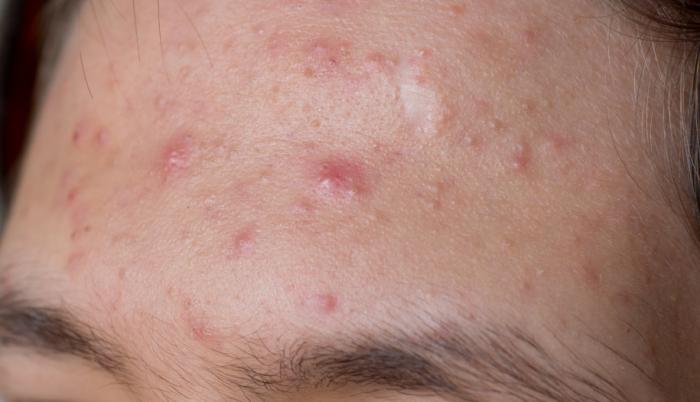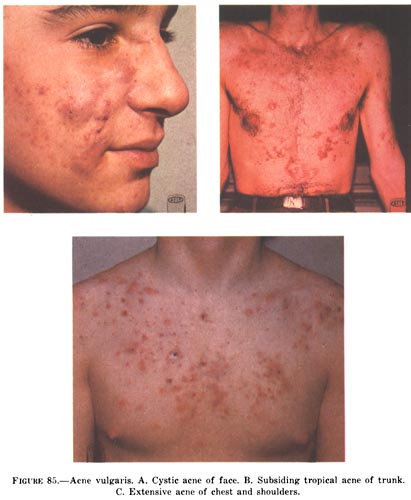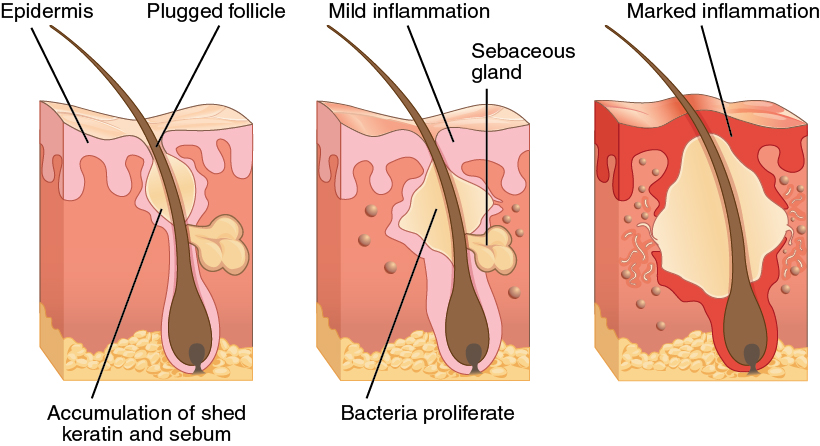Acne vulgaris is the most common form of acne. Acne vulgaris is chronic inflammation of pilo-sebaceous unit and its blockage. Pilo-sebaceous unit in simple terms is hair follicles plus sebaceous gland.
Well, every pimple may feel like acne but it may not be acne. If your acne is persistent and has abnormal signs related to it, better visit your dermatologist because it may not be just acne vulgaris, the commonest and less severe form of acne.

Acne vulgaris has specific features. It is characterized by
1.Comedones
Comedones (sing: Comedo) are a plug of keratin and sebum in a dilated pilo-sebaceous orifice. Comedones actually means black heads (open comedones) and white heads (closed comedones) that are commonly present on nose. Comedones occur as a result of the blockage of the sebaceous glands.

2. Oily Skin
Excessive secretion of sebum by the seborrhic glands causes oily skin. Oily skin develops less wrinkles in old age but is more prone to acne. People with more than normal oily skin have over active sebaceous glands which leads to formation of comedones or colonization by bacteria.
3.Papules, pustules, cysts
Papules (regular pimples): Small, raised part of skin which may be colored.
Pustules (large pimples): A visible accumulation of pus in the skin, usually yellow or may be green sometimes.
Cyst (deep painful pimple): A cavity containing sac on the skin containing fluids.
It is usually associated with redness and localized pain on the site.
4. Age of presentation
It usually starts in the teenage. The cause of presentation at this stage is due to surge of hormones at that stage with the development of secondary sexual characteristics. It is usually due to the hike of androgen in the body both in females and males. But it is not impossible to have acne at older ages too, females usually are seen to have acne even at the age of 25.
5. Sites for acne
It mainly affects the face, chest, arm and the back ( in decreasing order). Acne basically can occur on any part of human skin except palms and soles since they lack on sebaceous gland. Most common site being the face, acne usually affects the nose, forehead and the jaw line.

6. Any underlying pathological conditions
The main pathological cause is increased sebum secretion due to enlarged sebaceous gland. Thus leading to occlusion or blockage of pilosebaceous gland and then further colonization by a bacteria called Propionibacterium acnes.

People with underlying hormonal imbalances like females suffering from PCOS(Polycystic Ovarian Syndrome) who tend to have high levels of androgens in them are prone to acne.
People suffering from autoimmune hepatitis usually have cushingoid faces with acne.
The above written characteristics are specific to acne vulgaris. It helps you recognize if the pimples you have, are lesions of acne vulgaris. Acne vulgaris is most easy to recognize since its the most common. But there are other types of acne, if your features don’t match with those written above.
Grades of pimple
Acne can be graded according to the type of lesion present on your skin.
Grade 1: Lots of comedones and occasional papules
Grade 2: lots of comedones, occasional papules and few pustules
Grade 3: Lots of comedones, occasional papules, and pustules
Grade 4: Lots of comedones, papules, pustules and also nodules and scars
Acne vulgaris only is not a dangerous disease but may lead to severe permanent scaring on grades 3 and 4 type of acne. Having high fever or overly red skin or severe itchiness point towards severe manifestations. If there is any other associated feature or severity in your Acne, you should visit your dermatologist for expert advice!
Acne is not dangerous disease and in most of the time, you can treat acne from home.